
Hollywood, and indeed the world, mourned on October 11 as news broke of the passing of Diane Keaton, a revered actress whose distinctive style, profound talent, and singular screen presence left an indelible mark on cinema. Her death at the age of 79 prompted an outpouring of grief and remembrance from colleagues, friends, and legions of admirers, all reflecting on a career that spanned decades and redefined what it meant to be a leading lady. Initially, details surrounding her passing were sparse, lending a somber quietude to the industry’s immediate reactions.
Days later, clarity emerged regarding the circumstances of her death. The cause was reportedly revealed as pneumonia, specifically identified as “primary bacterial pneumonia,” according to People magazine, which cited a statement from the actress’ family on October 15. This news came after the Los Angeles Fire Department confirmed responding to a medical call at Keaton’s Brentwood home and transporting a patient to the hospital on the day of her death, a detail that offered the first glimpse into the immediate events preceding her passing.
As the industry began to process this profound loss, a deeper appreciation for Keaton’s extraordinary life and career began to unfold. Her journey from early stage successes to her iconic status as a Hollywood staple is a narrative rich with memorable performances, artistic risks, and a commitment to authenticity. This article will reflect on the initial reports of her death, delve into her seminal roles, and examine the remarkable trajectory of a star who consistently chose freedom and individuality in her artistic and personal life.
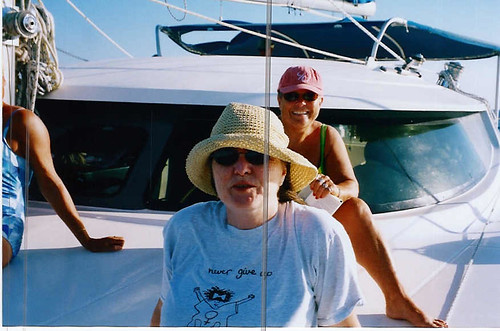
1. **The Somber Announcement: Diane Keaton’s Passing and Cause of Death**The entertainment world was met with profound sadness on October 11, when reports confirmed the death of Oscar-winning actress Diane Keaton at the age of 79. Publications such as People, The New York Times, and CBS News were among the first to report the news, citing individuals close to Keaton, including producer Dori Rath. While her passing was widely reported that Saturday, initial details regarding the circumstances were not immediately made public, with her family requesting privacy during their time of grief.
Further information regarding Keaton’s cause of death emerged in the days following the initial announcement. According to a statement released by her family to People magazine on October 15, Diane Keaton passed away from pneumonia. Subsequent reports, including those from CNN and The Post, which obtained her death certificate, specified the cause as “primary bacterial pneumonia,” noting that she had been ill with the condition for several days prior to her passing. The death certificate also indicated that no other significant contributing health conditions were listed.
The process of handling her passing also became known, with the death certificate confirming that Keaton, at 79, had been cremated and that no autopsy was performed. Authorities explained that in high-profile deaths, the Los Angeles medical examiner might not get involved if the death clearly appears to be from natural causes, as was the case here. The Los Angeles Fire Department’s earlier confirmation of responding to a medical call at her Brentwood address and transporting a patient to a hospital on October 11, provided a timeline for the final moments.
Insights from friends shed further light on her health in the months leading to her death. A friend shared that Keaton’s health had “declined very suddenly,” describing it as “unexpected” for someone of her strength and spirit. Songwriter Carole Bayer Sager noted that she had seen Keaton “two or three weeks ago, and she was very thin,” having “lost so much weight.” Despite the physical decline, another friend recalled that Keaton “was funny right up until the end,” emphasizing that she “lived exactly how she wanted to, which was on her own terms.”
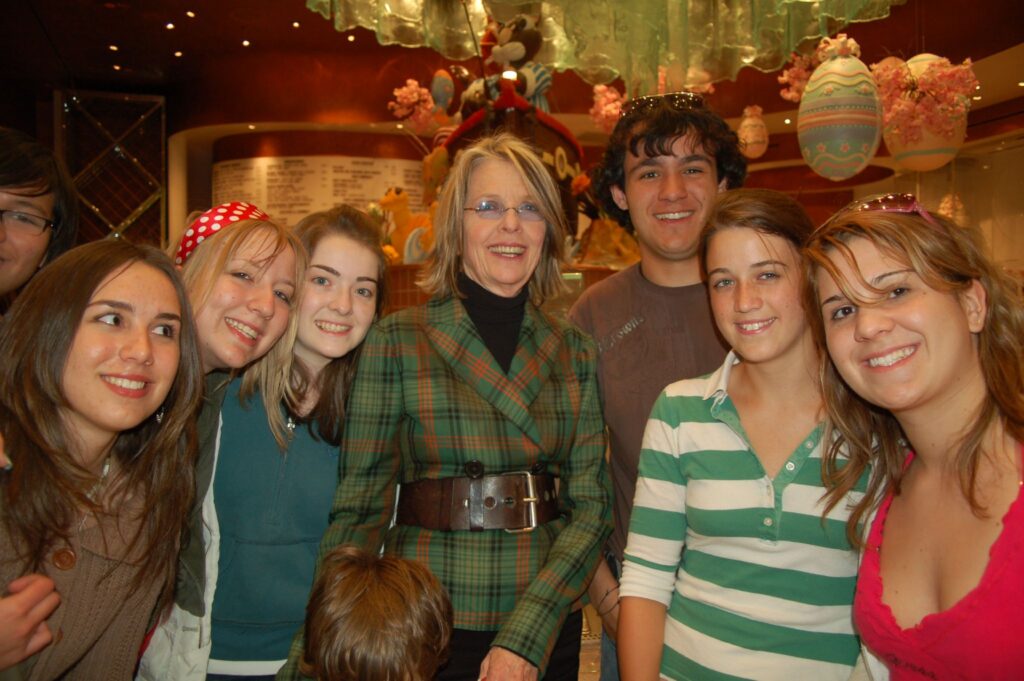
2. **A Star’s Genesis: Early Career and “The Godfather” Breakthrough**Born Diane Hall on January 5, 1946, in Los Angeles, Diane Keaton’s journey to cinematic stardom began not immediately on the silver screen but through her dedication to the performing arts. Her early career saw her immerse herself in the vibrant New York stage scene of the late 1960s, honing her craft and developing the unique theatrical sensibility that would later become her signature. This foundational period allowed her to cultivate a presence that was both distinctively quirky and undeniably captivating.
It was at the age of 25 that Keaton earned significant early recognition for her stage work, receiving a Tony nomination for her role in Woody Allen’s 1969 theatrical production of “Play It Again, Sam.” This collaboration with Allen marked the beginning of a pivotal professional relationship that would profoundly shape her career in the coming decades. Her talent for comedic timing and her ability to embody nuanced characters were evident even in these initial acclaimed performances.
However, it was her breakthrough role at 26 years old that truly catapulted her into the national consciousness: portraying Kay Adams-Corleone in Francis Ford Coppola’s monumental 1972 film, “The Godfather.” This role, a stark contrast to her comedic stage work, demonstrated her remarkable versatility and her capacity to hold her own amidst a formidable ensemble cast. Her performance as the initially naive, then increasingly disillusioned, wife of Michael Corleone, became an integral part of one of cinema’s most revered sagas.
The success of “The Godfather” franchise established Diane Keaton as a significant presence in Hollywood, paving the way for a career characterized by diverse roles and critical acclaim. Her portrayal of Kay Adams-Corleone, while not initially conceived as a starring role, allowed her to showcase a depth and subtlety that hinted at the profound range she would later display. This early success set a high benchmark for the illustrious career that would follow, confirming her as a talent to watch.
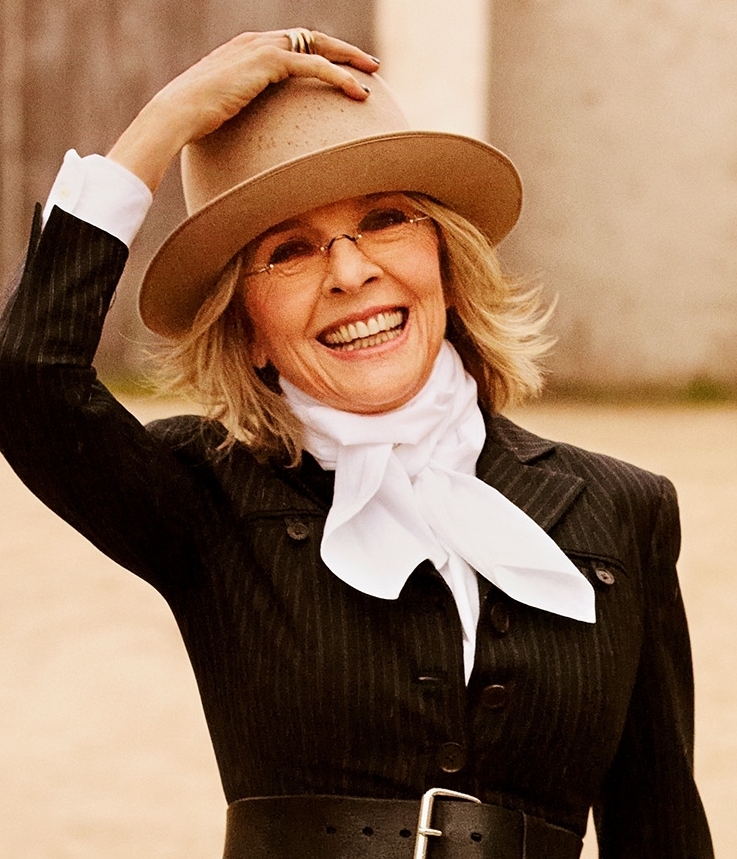
3. **The “Annie Hall” Triumph: An Oscar-Winning Performance**Diane Keaton’s career reached an undeniable pinnacle in 1978 when she won the Academy Award for Best Actress for her performance in Woody Allen’s iconic film, “Annie Hall.” This triumph marked a defining moment, solidifying her status as a leading lady and earning her the first and only Oscar statuette of her illustrious career. The role of Annie Hall, with its distinctive fashion sense and conversational charm, became synonymous with Keaton herself.
The film itself was a cultural phenomenon, and Keaton’s portrayal was central to its success. “Annie Hall” was one of many fruitful collaborations between Keaton and her onetime partner, Woody Allen, a partnership that frequently showcased her unique blend of neurosis, wit, and vulnerability. Her performance captured the zeitgeist of the era, presenting a character that felt refreshingly authentic and deeply relatable to audiences.
Keaton’s portrayal of Annie Hall transcended mere acting; it defined a new kind of cinematic heroine. Her improvised lines and naturalistic delivery contributed significantly to the film’s distinctive tone and helped shape its groundbreaking narrative style. The character’s signature style, a mix of oversized menswear, vests, and hats, became an influential fashion statement, cementing Keaton’s status not only as an actress but also as a trendsetter.
This Academy Award win was a testament to her singular talent and her ability to inhabit a character so fully that it blurred the lines between performer and persona. The enduring legacy of “Annie Hall” and Keaton’s unforgettable performance continues to resonate, serving as a benchmark for romantic comedies and an iconic moment in cinematic history. It remains a highlight of her celebrated career, demonstrating her exceptional ability to infuse roles with profound personality and charm.
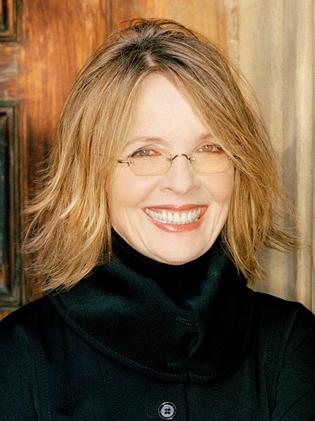
4. **Beyond the Wit: Dramatic Acumen in “Looking for Mr. Goodbar” and “Reds”**While Diane Keaton became widely celebrated for her comedic timing and effervescent screen presence, particularly in her collaborations with Woody Allen, her acting repertoire extended far beyond the realm of humor. She consistently demonstrated a profound dramatic sensibility, capable of tackling complex, emotionally resonant roles that showcased her versatility as a performer. This aspect of her talent often provided a powerful counterpoint to her more lighthearted roles.
One striking example of her dramatic prowess came in 1977 with her intense performance in “Looking for Mr. Goodbar.” In this film, Keaton ventured into darker, more challenging territory, portraying a character grappling with profound psychological and social complexities. Her ability to convey vulnerability, desperation, and a slow unraveling of self earned her critical recognition, demonstrating a significant departure from her more comedic roles of the same period.
Further solidifying her dramatic credentials, Keaton delivered another critically acclaimed performance in Warren Beatty’s 1982 historical epic, “Reds.” In this ambitious film, she played Louise Bryant, an American journalist and feminist. Her portrayal was lauded for its depth and emotional conviction, capturing the intellectual and romantic spirit of a tumultuous era. This demanding role once again highlighted her capacity for nuanced character development.
Her powerful work in “Reds” earned Diane Keaton another Academy Award nomination for Best Actress, underscoring her ability to seamlessly transition between genres and deliver compelling performances across the dramatic spectrum. These roles, alongside others like “Marvin’s Room” (1996) and “Something’s Gotta Give” (2004) – which also garnered Oscar nominations – cemented her reputation as an actor of formidable range and profound emotional intelligence, proving she was far more than just a comedic muse.
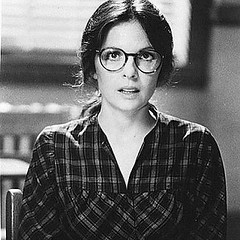
5. **A Comedic Icon: “The First Wives Club” and Other Beloved Roles**Beyond her Oscar-winning dramatic performance and early career breakthroughs, Diane Keaton captivated audiences worldwide with a series of beloved comedic roles that solidified her status as a true icon of the genre. Her unique brand of humor, often blending wit, vulnerability, and a touch of eccentricity, resonated deeply with viewers and showcased her enduring appeal across different generations. These films often presented her as a relatable, intelligent woman navigating life’s complexities with charm.
One of her most celebrated comedic triumphs came with the 1996 hit film, “The First Wives Club.” Co-starring with fellow legends Goldie Hawn and Bette Midler, Keaton’s portrayal of Annie Paradis, a woman seeking retribution after being discarded by her husband, was both hilarious and empowering. The film garnered immense popularity for its witty script and the undeniable chemistry among its three leading actresses, demonstrating Keaton’s skill in ensemble comedy.
Her talent for delivering memorable comedic performances was also evident in films such as “Baby Boom,” where she charmed audiences as a high-powered executive unexpectedly embracing motherhood, and “Father of the Bride,” in which she portrayed the endearing matriarch of a family preparing for a daughter’s wedding. These roles allowed her to display a warmth and groundedness that made her characters instantly appealing and often quite inspirational.
In later years, Keaton continued to delight audiences with her comedic presence, notably in the successful “Book Club” franchise, which proved her enduring box office appeal. Her final film, “Summer Camp,” released as recently as 2024, underscored her commitment to her craft and her continued ability to engage and entertain. These films collectively highlight her remarkable ability to infuse humor with depth, creating characters that are not only funny but also deeply human and universally cherished.” , “_words_section1”: “1945
Read more about: A Sudden Twilight for a Hollywood Original: Reflecting on Diane Keaton’s Unexpected Passing and Her Enduring Legacy

6. **Enduring Collaborations: The Impact of Nancy Meyers and Beyond**While Diane Keaton’s professional partnership with Woody Allen remains a seminal chapter in her career, her remarkable ability to forge meaningful and artistically fruitful collaborations extended to other influential filmmakers, notably Nancy Meyers. This later-career alliance provided Keaton with some of her most beloved and commercially successful roles, showcasing her evolving appeal to new generations of audiences and critics alike. It cemented her place as an actress capable of anchoring narratives with both wit and profound emotional intelligence.
Filmmaker Nancy Meyers, a friend of Keaton’s for four decades, directed her in several notable features, including the widely acclaimed romantic comedy “Something’s Gotta Give” and the enduring family favorite “Father of the Bride.” Meyers’ tribute upon Keaton’s passing eloquently captured the depth of their professional and personal bond, stating, “We have lost a giant. A brilliant actress who time and again laid herself bare to tell our stories.” This sentiment underscores Keaton’s fearlessness and dedication to her craft, qualities that made her an exceptional collaborator.
Meyers further elaborated on Keaton’s unique contributions to their shared projects, noting, “Every set up, every day, in every movie, I watched her give it her all. She was fearless, she was like nobody ever, she was born to be a movie star, her laugh could make your day and, for me, knowing her and working with her – changed my life.” These collaborations allowed Keaton to portray complex, often older, women navigating life’s challenges with grace, humor, and an authentic vulnerability, creating characters that resonated deeply with viewers and further solidified her iconic status.
Read more about: A Sudden Twilight for a Hollywood Original: Reflecting on Diane Keaton’s Unexpected Passing and Her Enduring Legacy

7. **A Life on Her Own Terms: Motherhood, Privacy, and Philanthropic Spirit**Beyond the glare of Hollywood, Diane Keaton cultivated a deeply private personal life, characterized by choices made distinctly on her own terms. A significant aspect of this personal journey was her decision to embrace motherhood later in life, adopting her daughter Dexter, now 29, and son Duke, now 25, after she turned 50. This path reflected a deliberate and considered approach to life, distinct from conventional expectations, aligning with her broader philosophy of freedom and independence.
Keaton often spoke candidly about her experience with motherhood, conveying a deep affection and commitment. She once told *Ladies’ Home Journal*, “Motherhood was not an urge I couldn’t resist. It was more like a thought I’d been thinking for a very long time. So I plunged in.” She relished the normalcy of their family life, humorously observing at her 2022 Hand & Footprint Ceremony that her children “have no interest in what I do, which I think is very healthy. We live a relatively normal — well, sort of normal — life.”
Her personal values extended into a dedicated philanthropic spirit, particularly towards causes close to her heart. The family’s statement, released after her passing, revealed her profound love for animals and her steadfast support for the unhoused community. They encouraged donations in her memory to a local food bank or an animal shelter, a testament to her enduring compassion and commitment to social welfare. These private passions provided a rich dimension to her public persona, illustrating a life lived with purpose and deep personal conviction.
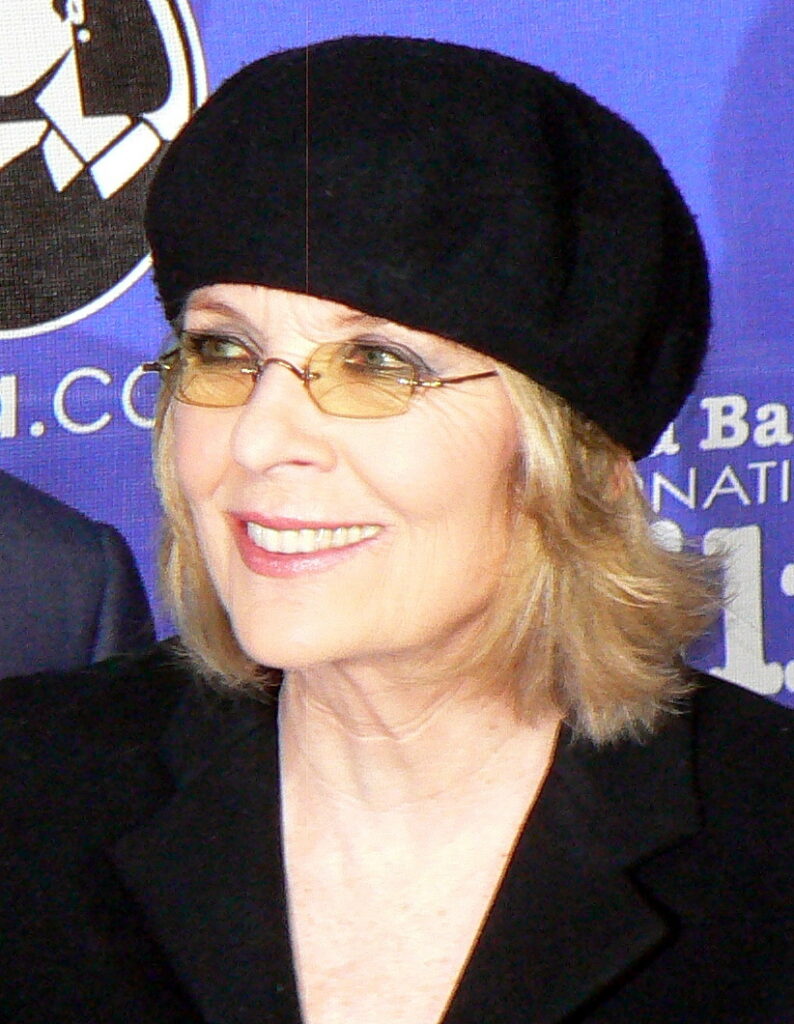
8. **The Unmistakable Silhouette: Diane Keaton’s Enduring Fashion Legacy**Diane Keaton’s influence extended far beyond her cinematic achievements, carving out an indelible legacy in the world of fashion. Her distinctive sartorial choices, particularly those showcased in “Annie Hall,” revolutionized women’s style and introduced a refreshing blend of menswear-inspired elements into mainstream fashion. This iconic look, characterized by oversized jackets, vests, ties, and hats, became a powerful statement of individuality and effortless chic.
Her unique approach to dressing was not merely confined to her on-screen characters; it was a deeply ingrained aspect of her personal identity. Keaton consistently eschewed conventional glamour for a style that was authentically her own, demonstrating an unwavering confidence in self-expression. She remained a noted trendsetter throughout her life, captivating audiences not only in films but also through her presence on social media platforms like Instagram, where she amassed 2.6 million followers by sharing her evolving fashion sensibilities.
Her fashion choices transcended fleeting trends, establishing a timeless aesthetic that continues to inspire. The enduring appeal of her style lay in its ability to blend sophistication with a playful, often quirky, sensibility, reflecting the very essence of her screen persona. Diane Keaton proved that true style is an extension of personality, a form of artistic expression that resonates long after the curtain falls, securing her place as a bona fide fashion icon.

9. **A Chorus of Tributes: Remembering a Singular Talent**The news of Diane Keaton’s passing ignited an overwhelming outpouring of tributes from across the entertainment industry, reflecting the profound impact she had on her colleagues, friends, and the broader cultural landscape. These heartfelt remembrances painted a portrait of an artist whose talent was matched by her warmth, humor, and unique spirit.
Nancy Meyers, her frequent collaborator, remembered her as “a giant” and an actress who “made everything better,” emphasizing her fearlessness and her innate talent as a movie star. Bette Midler, her co-star in “The First Wives Club,” described Keaton as “hilarious, a complete original, and completely without guile, or any of the competitiveness one would have expected from such a star.” These words collectively highlighted the genuine and unassuming nature that endeared Keaton to so many.
Further tributes underscored her distinctive qualities. Octavia Spencer hailed Keaton as “a force,” a woman who “showed us that being yourself is the most powerful thing you can be.” Patricia Arquette, whom Keaton directed in “Wildflower” and “Girl with the Crazy Brother,” lauded her as an “artist” with immense “generosity of spirit,” recalling Keaton’s comforting presence during a difficult scene. Kimberly Williams-Paisley, who played her daughter in “Father of the Bride,” called her “one of a kind,” while Mandy Moore, her onscreen daughter in “Because I Said So,” described her as an “incandescent human” whose presence felt timeless.
These collective sentiments illustrate a profound admiration for Keaton’s artistic contributions, her personal integrity, and the indelible mark she left on those who knew her. The consistent themes of authenticity, kindness, and an unparalleled talent resonate through every tribute, underscoring the depth of Hollywood’s loss and the enduring legacy of a truly singular individual.
Read more about: Scarlett Johansson Leads a Chorus of Tributes: Robert Redford’s Enduring Legacy of Generosity and Artistic Inspiration

10. **Medical Perspective: Understanding Primary Bacterial Pneumonia**The confirmed cause of Diane Keaton’s passing, primary bacterial pneumonia, sheds light on a significant health concern, particularly for older adults. Bacterial pneumonia, which is an infection causing inflammation of the lungs, represents the most common type of pneumonia and can often be more severe than its viral counterparts. It is typically treated with antibiotics, though the specific bacterium responsible for Keaton’s illness was not disclosed.
Medical experts, such as NBC News medical contributor Dr. Natalie Azar, highlighted that individuals 65 years and older face a heightened risk of severe complications from pneumonia. This increased vulnerability stems from the natural weakening of the immune system with age and the potential presence of other chronic health conditions. Pneumonia accounts for a considerable number of fatalities annually in the U.S., with approximately 41,000 deaths and 1.2 million emergency room visits reported each year.
Awareness of the symptoms of pneumonia is crucial for early detection and intervention. Key indicators include bluish lips or fingertips, new shortness of breath, chest pain, confusion, a high fever, and a severe wet cough. Recognizing these signs promptly can facilitate timely medical attention, which is vital for managing the infection effectively, especially in vulnerable populations.
Preventive measures play a critical role in mitigating the risk of severe pneumonia. Dr. Azar emphasized the importance of several vaccinations, including those for RSV, COVID-19, and the flu, as these viral infections can often predispose individuals to bacterial pneumonia. Additionally, the pneumococcal vaccine is highly recommended, particularly as the CDC recently lowered the recommended age for this vaccination from 65 to 50, underscoring its importance in preventing serious forms of the disease. Maintaining a healthy lifestyle and avoiding smoking are also essential for strengthening the body’s defenses against respiratory infections.
Diane Keaton’s passing marks the end of an era for Hollywood, yet her influence will undoubtedly persist. Her career, characterized by an unparalleled ability to imbue every role with depth and a distinctive flair, alongside a personal life lived with integrity and quiet generosity, established a benchmark for artistic authenticity. She was a talent who continually evolved, challenging conventions and inspiring countless individuals through her work, her style, and her unwavering commitment to being authentically herself. The tributes from her peers and the enduring affection of her audience serve as a testament to a life exceptionally lived and a legacy that will continue to resonate for generations to come.



